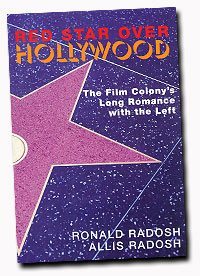 An old Spanish adage states: “I don’t believe in ghosts, but they do exist.” Paraphrasing this adage, an astute analyst could state: “I don’t believe in conspiracies, but they do exist.”
An old Spanish adage states: “I don’t believe in ghosts, but they do exist.” Paraphrasing this adage, an astute analyst could state: “I don’t believe in conspiracies, but they do exist.”
Though refusing to see black helicopters looming around every corner, an intelligent observer will conclude that powerful forces operate behind the scenes, influencing many aspects of society. Considering the history of the past few centuries, nothing could be more logical. As Prof. Plinio Corrêa de Oliveira observed:
The production of a process as consistent and continuous as that of the Revolution amid the thousand vicissitudes of centuries fraught with surprises of every kind seems impossible to us without the action of successive generations of extraordinarily intelligent and powerful conspirators. To think that the Revolution could have reached its present state in the absence of such conspirators is like believing that hundreds of letters thrown out a window could arrange themselves on the ground to spell out a literary piece, Carducci’s “Ode to Satan,” for instance.1
This conspiracy is brought to the forefront by Ronald and Allis Radosh, in their myth-shattering new book, Red Star Over Hollywood, The Film Colony’s Long Romance with the Left. It proves, through extensively documented facts, that Communism had deep inroads into Hollywood where its agents exerted an impressive control, obeying the Party’s every decree.2
As such, Red Star Over Hollywood is a frontal assault on the widely-accepted view that blacklisted members of the film industry were innocent, idealistic martyrs. It shows how many of those investigated by the House Committee on Un-American Activities (HUAC) in the forties and fifties, truly were communists under Party control.
Gaining an Inroad
Communism first gained an inroad into Hollywood during the twenties, when the Soviet Comintern made the film capital its primary target. The decision was reached when Lenin’s charismatic associate, Willi Munzenberg, realized the usefulness of the motion picture as a propaganda tool. Writing in the communist paper, the Daily Worker, Munzenberg stated:
We must develop the tremendous cultural possibilities of the motion picture in the revolutionary sense. One of the most pressing tasks confronting Communist Parties on the field of agitation is the conquest of this supremely important propaganda weapon, until now the monopoly of the ruling class; we must wrest it from them and turn it against them.
The film community in Hollywood proved fertile ground for communist infiltration, and soon many of its most influential members were pledging their primary allegiance to Joseph Stalin.
Dogged Commitment
One of the book’s chapters, dedicated to the story of Albert Maltz, shows just how doggedly committed Hollywood communists were. Albert Maltz was a communist screenwriter who dared opine that the party’s rigid control over content was stifling artistic creativity. Immediately, an avalanche of persecution fell on top of him.
When the smoke cleared, Mr. Maltz not only begged for forgiveness and published a complete retraction of his former opinions, but partook in similar persecutions against future dissenters.3
Another of the book’s strong points is an appendix that shows how segments of the film industry to this day tote the party line. This is illustrated by films such as “One of the Hollywood Ten,” which debuted in 2002.
Reading the Facts
The facts that Mr. and Mrs. Radosh present should convince readers that both the HUAC’s existence and the prosecution of blacklisted film workers was justified. Nevertheless, the Radoshes refuse to reach this conclusion. In the book’s final paragraph, they state: “Of course, it is right to condemn the blacklist. It was wrong to deprive artists of their livelihood because of their political views.”3
However, to label the blacklist a tool of political oppression is to deny the facts. Hollywood communists brandished a “supremely important propaganda weapon,” controlled by a foreign government committed to the destruction of the United States and world freedom. They were fanatical servants of America’s declared enemy. This is a crime that any government should suppress.
This is not to canonize the HUAC nor deny that it has been used to further Party goals. In the book’s conclusion, Mr. and Mrs. Radosh state:
Ultimately, HUAC and the Party served each other’s purposes: HUAC could easily establish that real Communists were active in Hollywood, while the unfriendly witnesses and the Communist Party could just as easily condemn HUAC members for initiating a “reign of terror.”
However, this observation does not condemn the institution’s existence.
Additionally, the Radoshes seem to value leftism as an alternate political belief system, and even pit it against Communism. In this, they fail to recognize that one is the logical consequence of the other.
Readers may also find some of the language used in the book’s direct quotations offensive.Despite these drawbacks, which do not detract from the valuable information contained in it, Red Star Over Hollywood is a must-read for anyone who is interested in the communist infiltration or wants to catch a glimpse at the controlling forces that operate beneath surface-reality.
Whether you believe in them or not, conspiracies do exist. If you still are not convinced, read Red Star Over Hollywood.
Footnotes
- Plinio Corrêa de Oliveira, Revolution and Counter-revolution, https://tfp.org/tfp-home/books/revolution-and-counter-revolution.html
- As quoted by Ronald and Allis Radosh in Red Star Over Hollywood, The Film Colony’s Long Romance With the Left (San Fransisco, Calif., Encounter Books, 2005) p. 3.
- Red Star Over Hollywood, p. 242.
4. Ibid. p. 236

